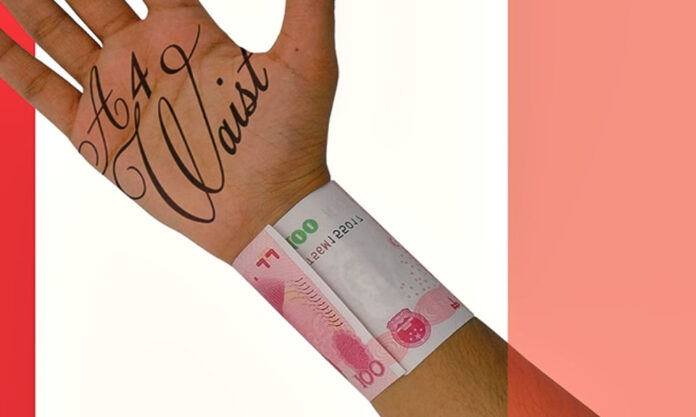Meet Jacqueline Chen. A girl from my gym who always adds one more practice to her workout routine; taking sweaty selfies. Every time she flaunts her toned abs and robust legs on WeChat, her screen is sure to be filled with hearts and thumbs.
This makes me wonder; has the traditional skinny image of Chinese women started to change?
Not so long ago, an English journalist asked netizens from around the world to Photoshop her into the standard beauty of their own country. As viewers enjoyed the process of her being transformed into a sexy Brazilian brunette or fair-skinned English lady, it may have startled some when that of China pops on screen, her having been turned into a super skinny scary-looking Chinese Barbie doll.
Surely, we can blame it on the retouching skills, but the image did have some truth to it.
In Chinese culture, thin is the default body type and for thousands of years there has been collective pressure to maintain it.
For example, a slender waist is considered to be one of the most desirable features a Chinese woman can possess, no matter in what era. During the Han dynasty (202 BCE – 220 CE), many women starved themselves in order to have a slender waistline, just as Zhao Feiyan, the wife of a Han emperor, who boasted the waist of a swallow, as legend has it.
On the other hand, during the 7th century at the beginning of the Tang dynasty (618 – 907 CE), lithe athleticism was prized in women. They rode, hunted on horseback, and even competed with men on the polo field as an influence of the traditions of northern nomadic tribes.
The slender fascination goes on today, as the “A4 waist challenge” spiced up the Weibo hot topics chart. The rule is that if you can cover your waist with a vertically placed A4 paper (width 21cm), you qualify as a “Shouzi” (a skinny person).
Similar challenges such as “iPhone 6 legs”, “one-yuan arm” and “100 yuan wrist” have ignited further debate.
Due to such beliefs held by the majority of Chinese women, many have resorted to extreme dieting to lose weight in the past. Yet, now more and more are willing to sweat it out through either running, spinning or belly dancing.
As the Wall Street Journal reported, a new fitness craze is catching on among Chinese women. Foreign sportswear brands such as Nike and Adidas see a new marketplace in Chinese women, who wish to get stronger and fitter. Young women like Jacqueline are willing to spend an average of ¥3,000 on brand trainers and neon-colored sports bras per month while working on toning their abs and legs.
In the meantime, fitness tracking apps and gadgets have also become essential in Chinese workouts. One fitness app, GuDong, has over 40 million users and claims the steps all users walked in 2015 could go around the Earth 600 times. WeChat has a function that tracks how many steps you walk per day and ranks you accordingly.
However, a lady was reported to have made it to the top of the chart without much effort by bonding her phone to her dog while enjoying Korean drama in front of the TV.
Despite how it may seem, the psychology behind keeping fit is certainly not just about showing off through gym selfies and cheating your way to the top of the charts.
According to the latest data, 28 of the countries 34 provincial-level administrative units host at least one marathon every year. In 2015, more than 136,000 people participated in 53 marathons nationwide.
From the beginning of 2015 to this March, the China Sports Company made over 257 investments, exceeding 17.4 billion RMB. Fitness was the hottest area for investments.
To those 20-something women who are bleeding out in the job jungle, going to the gym or running a marathon means not only getting a better physique, but also a sense of confidence and an edge in the job market. “It’s better than a cosmetic surgery”, said Jacqueline, who recently landed a job at a leading PR company.
As for those who are already climbing the career ladder, staying physically active helps to take the pressure off after sitting around all day in the office.
Nina Fu, an executive at a foreign trade company told The Nanjinger that no matter how busy she is everyday, she will always make time for her yoga class. “If life gets you down, do yoga. If life really gets you down, do hot yoga”, posted Nina on her Weibo with a picture of her doing a tree pose with her 5-year-old daughter, which melted the hearts of many.
Motivated by Jacqueline’s posts of huffing and blasting on eager workouts, I want to drop everything and head to the gym right now. If not for a better body image, getting a good selfie to post online will boost my Dopamine just the same.











